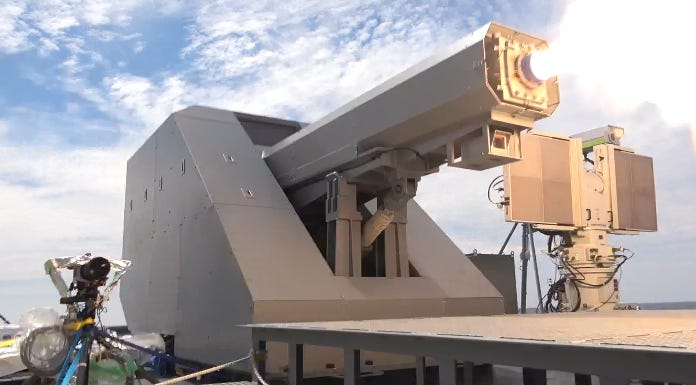Japan’s Hypersonic Railgun Test Succeeds Where the US Failed
Science Fiction, Or Just Very Expensive Science Fact?
If you like the idea of slamming a lump of steel through the sky fast enough to make hypersonic missiles blush, Japan wants to have a word.
Their navy has been quietly testing a shipboard electromagnetic railgun that fires inert projectiles at insane speed, and the footage looks like someone finally built the weapon from a dozen late-night sci-fi sketches and a terrifyingly competent engineering brief.
The test ship JS Asuka has been the gallery, and the railgun is the exhibit that makes you lean forward and ask, seriously, will this ever stop being cool? Let’s walk through what this thing is, why it matters, and why you should be both excited and suspicious when a country tells you it has tamed 20 megajoules of kinetic fury.
By the way, as a bona fide nerd complete with a Star Wars tattoo (it’s true), I just want to pause and appreciate the railgun’s appearance in science fiction.
In the video game Mass Effect, the entire series is built around the idea that railguns (or “mass accelerators”) are the backbone of human and alien weaponry. From pistols to capital ship cannons, every firearm is essentially a miniature railgun.
In Halo, the UNSC deploys the Magnetic Accelerator Cannon (MAC) on its ships, including the legendary orbital platforms that can tear through Covenant cruisers. Spartans also sometimes wield portable versions in vehicles like the Scorpion tank or Gauss Warthog.
In the 1996 movie Eraser, Arnold Schwarzenegger’s character wields the infamous “EM-1 Railgun,” a handheld sci-fi version complete with X-ray scope and aluminum projectiles moving at near-light speed. Utterly ridiculous, but unforgettable.
I could go on, but we need to get back to reality.
The Empire of the Rising Sun
Japan has put a large, electrically driven gun on a ship, and it fires projectiles at hypersonic speeds. The aim is to give the fleet a very cheap, very fast, and very lethal way to smash incoming missiles, drones, and maybe surface targets. Japan has published video stills and claimed progress.
The United States, which spent half a billion dollars trying roughly the same stunt, quietly shelved its railgun program a few years ago after nasty problems, mostly barrel wear and a short operational life.
Japan is trying again, with smarter metallurgy, better power systems, and precisely the kind of defense motivation that makes rapid iteration a national hobby. Ukraine would be proud.
Conventional naval defense is built on missiles and explosive shells, both of which are expensive. When your adversary can flood the sky with cheap drones or mass missiles, you quickly realize you cannot afford to answer a $10,000 drone with a $1 million interceptor unless you enjoy national bankruptcy.
Railguns promise a different economy of force.
They throw dense projectiles at Mach-level speeds using electricity and magnetic fields, not propellant. That means cheap rounds, huge muzzle energy, and speeds that shrink the time window for an incoming target to dodge or jam.
Oh, and railgun projectiles can’t be jammed because they’re just a hunk of metal.




